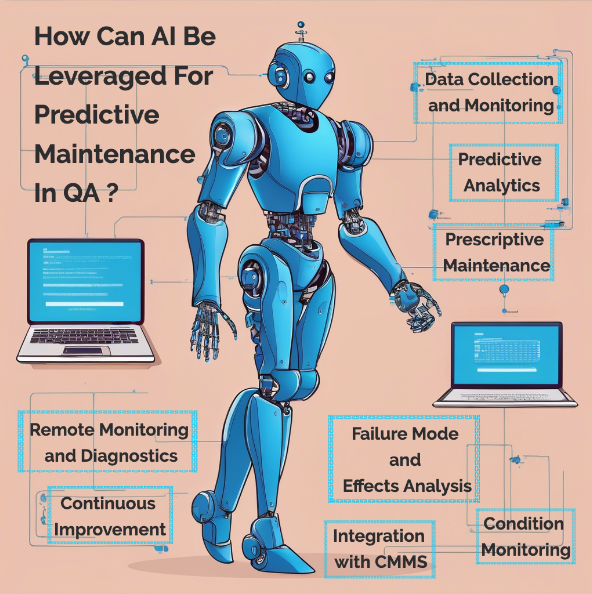How Can AI Be Leveraged For Predictive Maintenance In QA
- KEAS Group

- May 15
- 2 min read
AI can be a powerful tool for predictive maintenance in quality assurance, helping to identify and address potential issues before they cause significant problems. Here are some ways AI can be leveraged for predictive maintenance in quality assurance:
Data Collection and Monitoring: AI systems can collect and monitor vast amounts of data from various sensors, machines, and equipment in real-time. This data includes temperature, pressure, vibration, energy consumption, and other relevant parameters. By continuously monitoring this data, AI can identify anomalies or deviations from the normal operating conditions, which may indicate potential maintenance needs.
Predictive Analytics: Using machine learning algorithms, AI can analyze historical data to identify patterns and trends that precede equipment failures or quality issues. By recognizing these patterns, the system can predict when a component is likely to fail or when the quality of a product might deviate from the desired standards.
Condition Monitoring: AI-powered systems can perform condition monitoring, which involves tracking the health and performance of machines and processes. Through condition monitoring, AI can assess the condition of equipment and predict when maintenance is required based on the degradation of the machine's performance.
Failure Mode and Effects Analysis (FMEA): AI can assist in conducting FMEA to identify potential failure modes and their consequences. By combining historical data and FMEA, the system can prioritize maintenance tasks and focus on critical components or processes that are more likely to cause quality issues.
Prescriptive Maintenance: AI can go beyond prediction and provide prescriptive maintenance recommendations. When an issue is detected, the AI system can suggest specific actions to prevent or mitigate the problem, which can include scheduling maintenance tasks, adjusting process parameters, or replacing certain components.
Integration with CMMS: AI can be integrated with Computerized Maintenance Management Systems (CMMS) to optimize maintenance scheduling, resource allocation, and inventory management. This integration streamlines the maintenance process and ensures that the right resources are available when needed.
Remote Monitoring and Diagnostics: AI can enable remote monitoring and diagnostics, allowing maintenance teams to assess the health of equipment and quality processes from a distance. This capability can be especially useful in large-scale manufacturing operations or in situations where on-site visits are challenging.
Continuous Improvement: AI systems can learn from past maintenance experiences and continuously improve their predictive capabilities. As more data is gathered and analyzed, the AI model becomes more accurate in predicting potential issues and optimizing maintenance strategies.
By leveraging AI for predictive maintenance in quality assurance, businesses can minimize downtime, reduce maintenance costs, improve product quality, and enhance overall operational efficiency. However, it's crucial to ensure that the AI system is trained with relevant and accurate data and regularly updated to adapt to changing conditions and evolving maintenance needs.




Comments